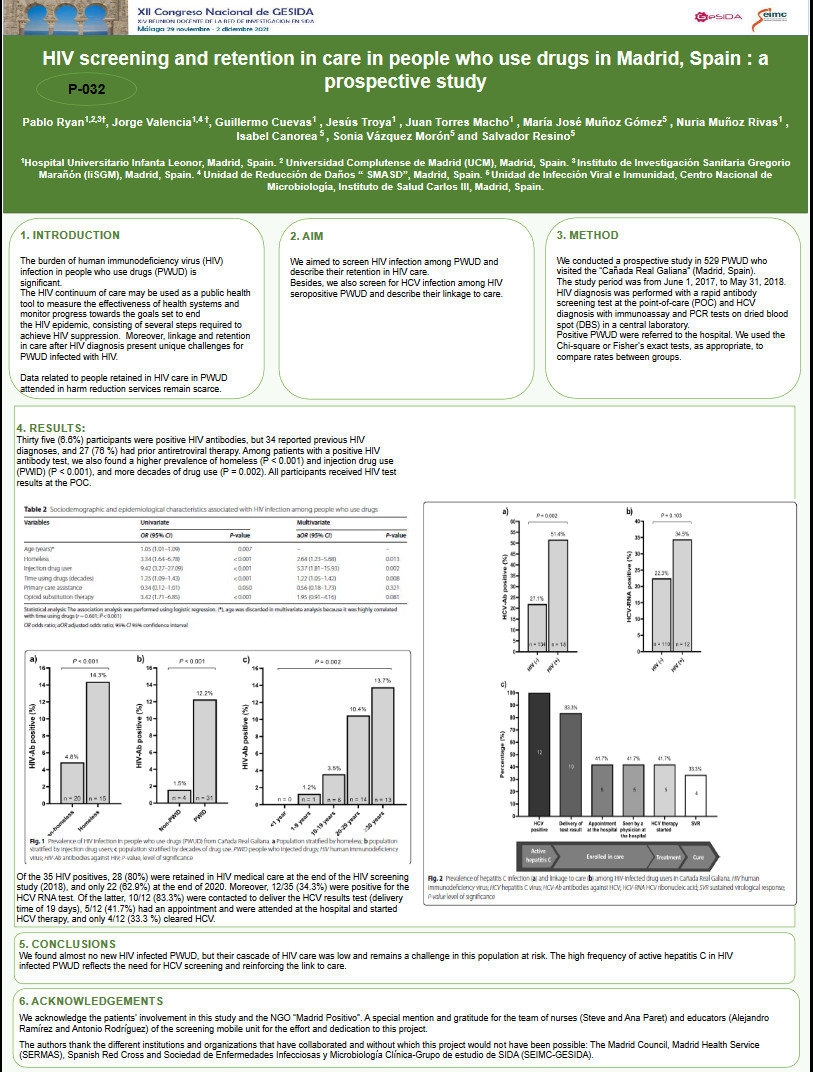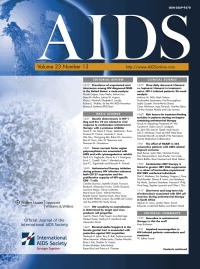Resum
Objectives: We measured the HIV incidence density and factors associated with HIV seroconversion among active highly illicit drug users enrolled in a Harm Reduction Unit (HRU) in Madrid (Spain).
Methods: We pooled data from participants followed in a HRU of Madrid between 2013 and 2016. All individuals were eligible for the analysis of HIV prevalence, whereas individuals who were baseline negative HIV and who had one re- HIV test were eligible for the analysis of HIV incidence density. Initial HIV positive test were excluded. Kaplan- Meier methods were used to estimate the global incidence density and stratified according to HCV status. The date of HIV seroconversion was estimated as the midpoint between an individual's last negative and rst positive test. Participants remaining persistently HIV negative were censored at the time of their most recent available HIV test. We also calculated the adjusted and unadjusted HR of HIV seroconversion using Cox proportional hazard regression. Results: 954 had at least a HIV serology. 648 were excluded for a unique HIV serology and 46 due to his initial HIV positive status.At baseline, 260 were HIV negative and had at least one follow-up HIV test. HIV prevalence was 7.8%. After 4 years of follow-up and 330.89 PY of risk for HIV infection, 10 seroconverted for HIV. Conclusion: There is a high rate of HIV seroconversion in active highly illicit drug users with previous positive HCV status. The PrEP could be another tool of HIV prevention in this group of drug users.






